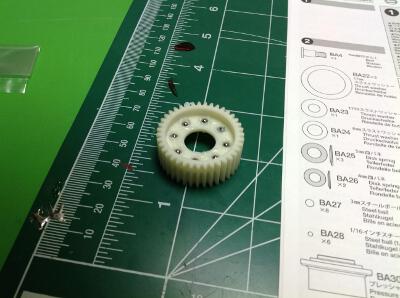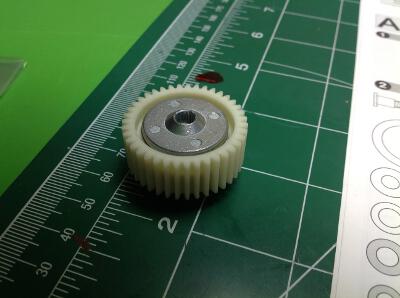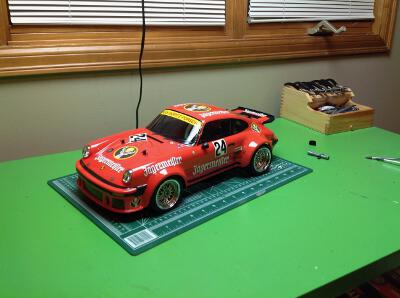With the body on you can see how low this car
is. Although the shadow hides the undercarriage a bit, in the
previous images you can see how the low slung battery actually hangs
beneath the body and is almost on the ground. Because of the
limitations of the battery compartment, you can only use a 6-cell NiMH
or similar shaped pack. The stickers took nearly forever.
There were 71 of them. I have made no upgrades to this set and
don't really intend to, but I may put a driver figure inside at some
point to complete the look.
Update:
I later replaced the standard silver can motor with a 30T FL-Tuned
motor. This doesn't make the car any faster (actually a little bit
slower), but I thought a special motor was a better fit for this
special car than the generic silver can. It looks pretty good in
there too, and the slightly slower speed will actually help prevent me
from rolling it over and ruining the body.


